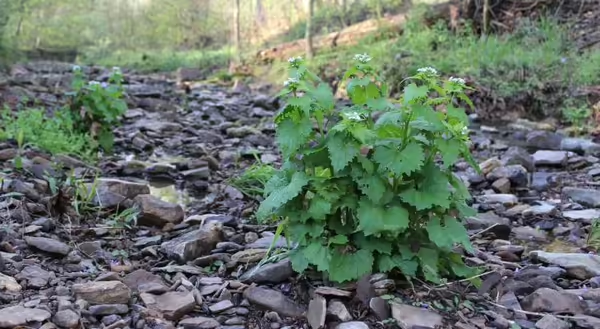
It’s beginning to feel more like spring and I know that many of us are anxiously awaiting the awakening of the plant world. Although we all know spring is sure to come, it would be nice to have some assurances on the timing and date of warm weather’s arrival. Unfortunately, that’s just not possible without a truly working crystal ball. However, there is some very important information about the seasonal habits of plants we can surmise from collection of phenology data from year to year.
Phenology is the study of seasonal natural phenomena. We can use phenology data about plant emergence, flowering, seed production and dormancy from past years to predict the timing of those processes now and in the future. This can be an invaluable tool when planning or coordinating the management of invasive species in Illinois.
Illinois Extension Forester, Chris Evans, recently embarked on a project focused on collection of these data to better inform land managers around the state.
“Phenology data for invasive plants is critical information for the development of effective management programs and timing of control treatments,” notes Evans.
“We use phenology data to fine tune our invasive plant management,” notes Evans. “Knowing the timing allows us to target the plants for management at just the right time”
Since 2015, Evans has been collecting data on almost 3 dozen invasive plants that occur across Illinois. Volunteers from all over the state have provided data from their seasonal observations and Evans has used that data to publish monthly phenology reports as an Illinois Extension Technical Forestry Bulleting series.
“The phenology program has allowed us to know much more about how these plants differ in terms of timing across the state and from year to year,” says Evans.
Over time, Evans’ growing data set will reveal more of this annual variability. Recently, he complied the first 3 years of data on this project into a statewide calendar. Since Illinois spans two USDA plant hardiness zones, from the Wisconsin border to the confluence of the Mississippi and Ohio rivers, there is quite a bit of variability in plant phenology from north to south. The data are grouped by regions of the state, representing the southern, central and northern regions. If you are interested in viewing the calendar, it is available at: go.illinois.edu/PhenologyCalendar.
Evans is always looking for more volunteers to contribute data. Most notably, there is a lack of reporting in our area of the state. If you are interested in reporting phenology from our area and can identify and monitor 3-4 invasive species, please contact Chris Evans at (618) 695-3383 or cwevans@illinois.edu.
One of the often most critical points of plant development each year is seed production and many invasive species, such as garlic mustard, are prolific seed producers. In order to stop the spread of these invasives it is critical to understand the timing of seed set and plan control measures that will inhibit seed production.
Garlic mustard (Alliaria petiolata) is a common invasive in central Illinois, infesting natural areas and outcompeting native vegetation to lower diversity of native plants and dominate forest understories. This exotic, invasive plant was brought to our continent from Europe for its culinary value. As its name implies, this biennial herbaceous plant is edible, adding a strong garlic flavor to food.
If you live close to an area with established garlic mustard, it can become a problem in our home landscapes and gardens as well. Thankfully, this plant is easily hand-pulled in the early spring prior to seed production, which is a critical control point as it only reproduces from seed. Being a biennial plant it takes two years to fully mature and produce seeds. Seed production is truly astronomical, cited as anywhere from 600 to over 7,000 seeds per plant. In our area, garlic mustard typically flowers around mid-April, with seeds reaching maturity by about mid-May.
Interestingly, a garlic mustard plant that has been pulled from the ground can actually still produce viable seeds if flowers were present at the time of removal. Hand-pulling must be timed accordingly to stop flower and seed production and the pulled plants must be bagged and removed from the area for proper disposal.
One local group, the Headwaters Invasive Plant Partnership (HIPP), plants an annual “Great Garlic Mustard Hunt” across our area. If you are interested in learning more about this invasive plant and joining the front lines in the battle to stop its spread, there are a number of opportunities to join HIPP and their partnering agencies in the fight. More information about the 2019 Great Garlic Mustard Hunt in central Illinois can be found at: go.Illinois.edu/GreatGarlicMustardHunt.
Explore more garlic mustard resources to get help with identification and control on the Invasive Species website.